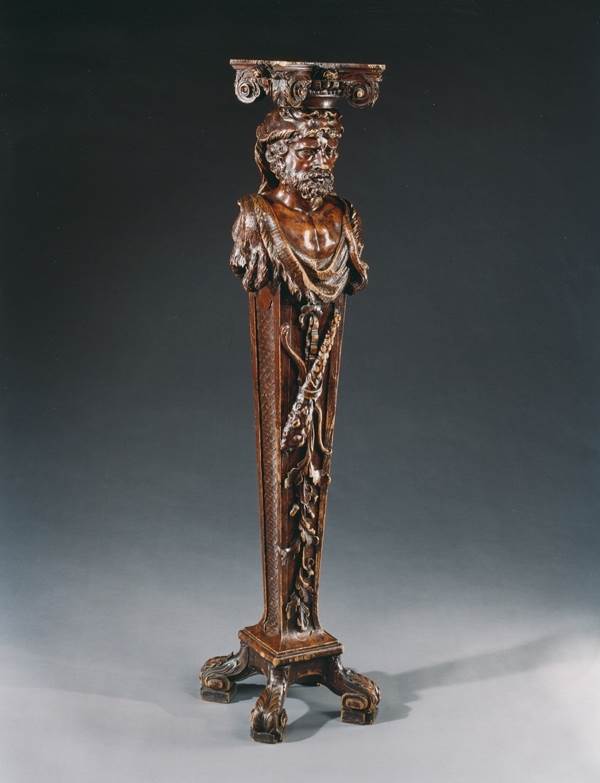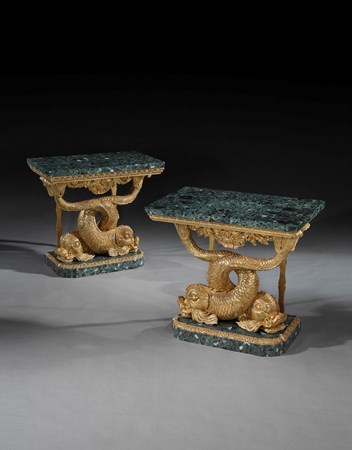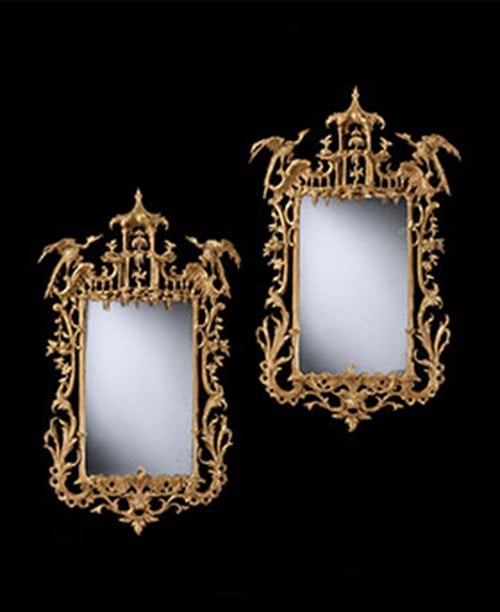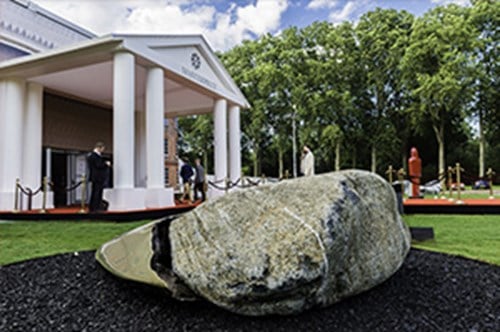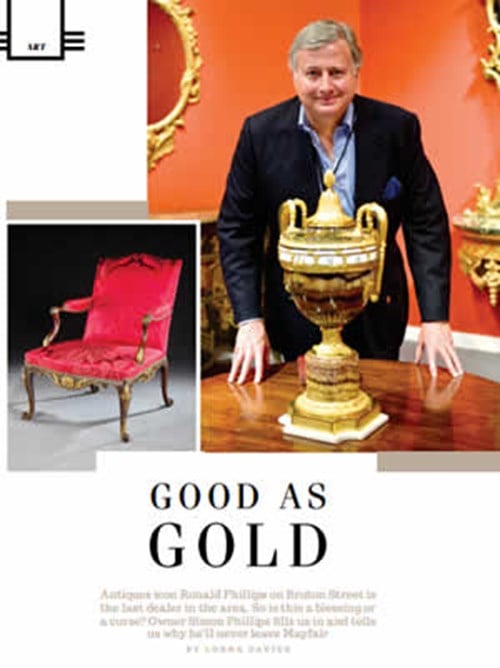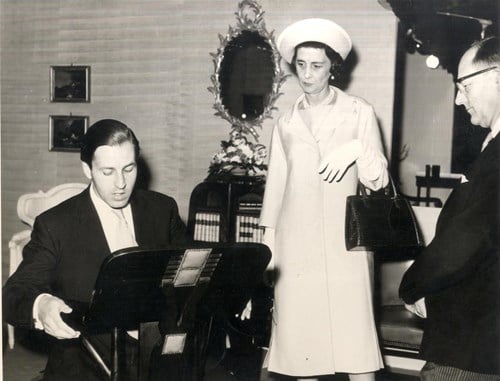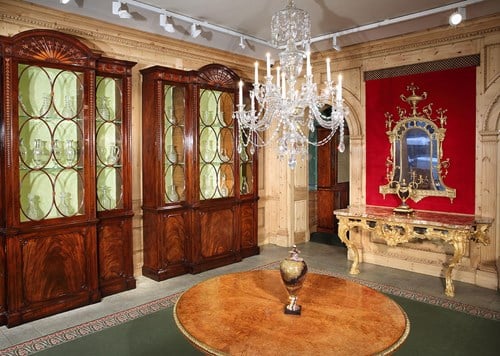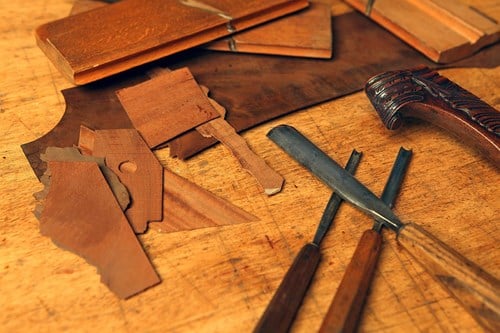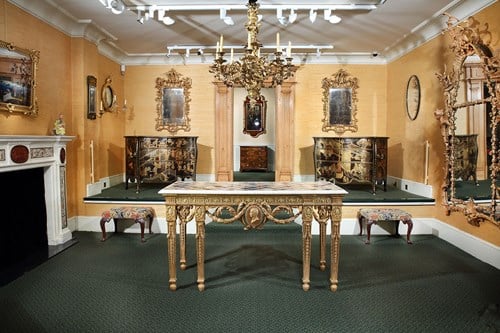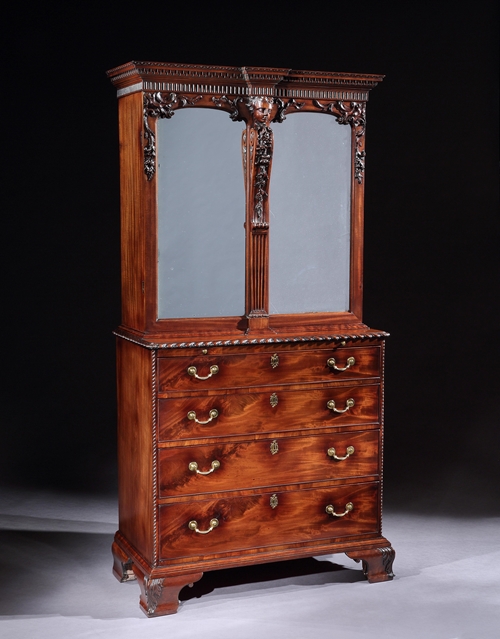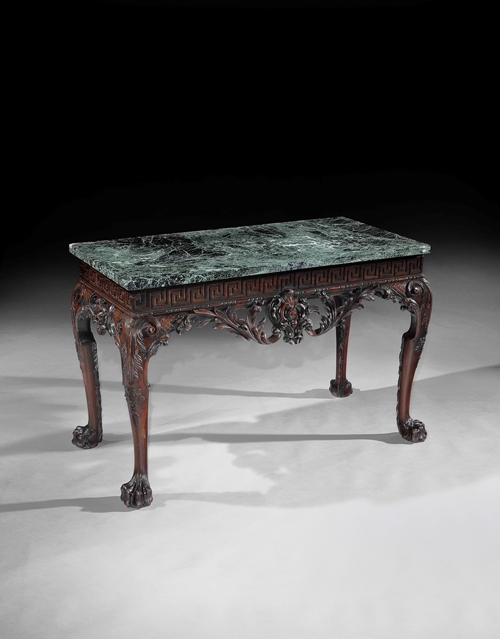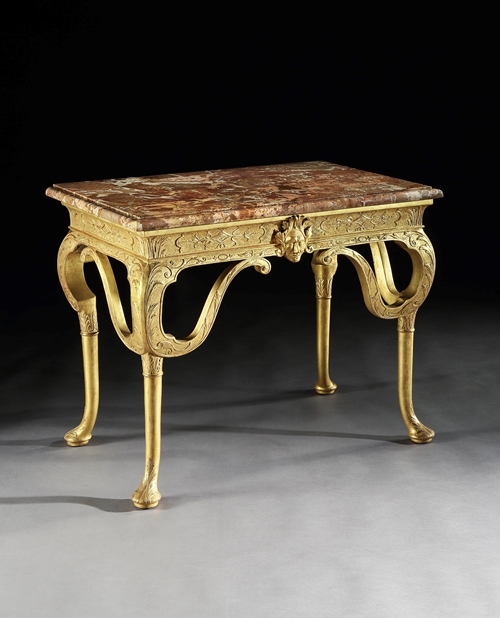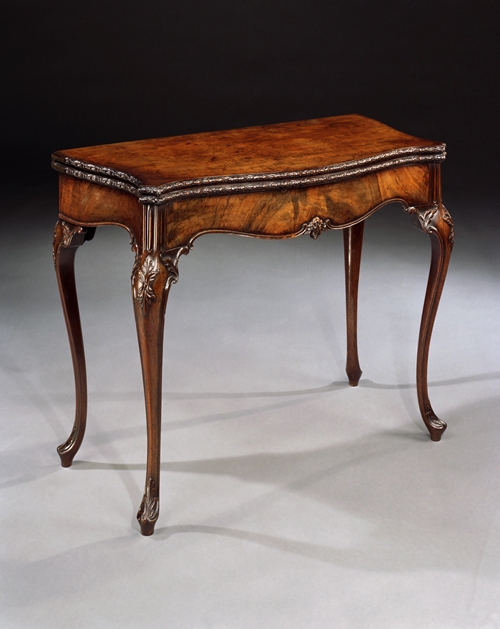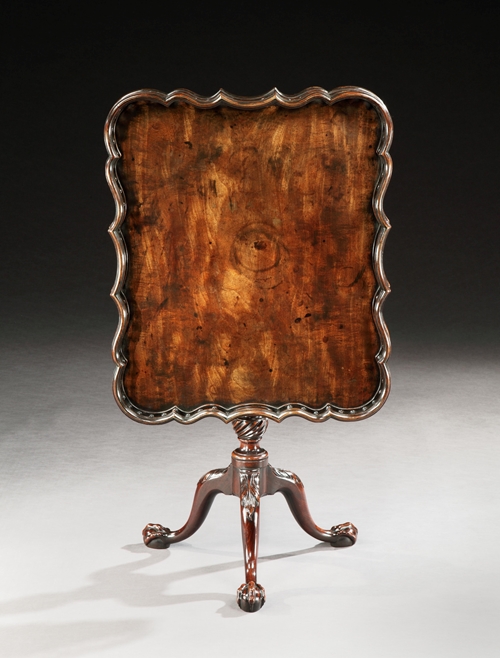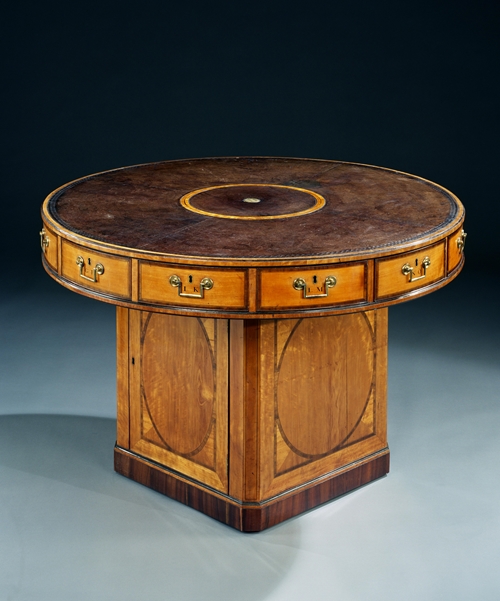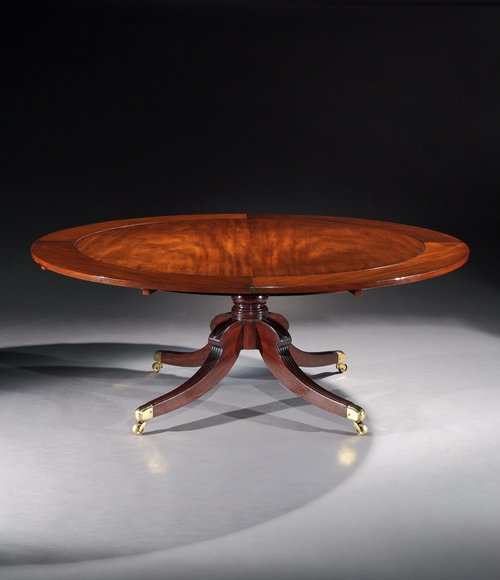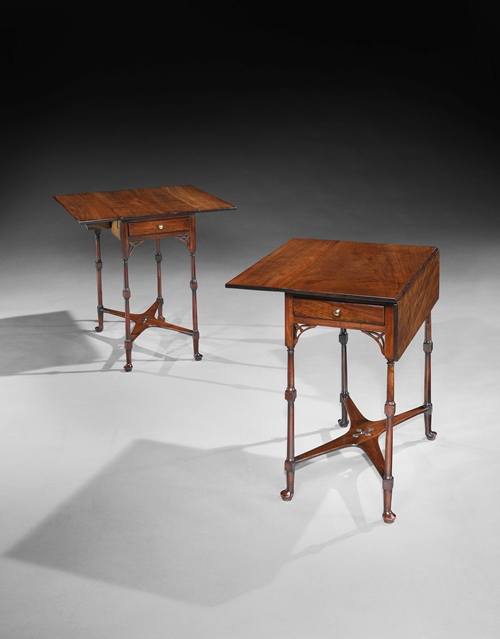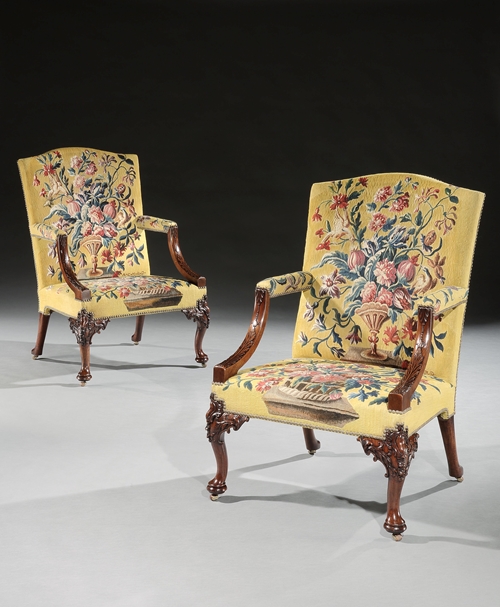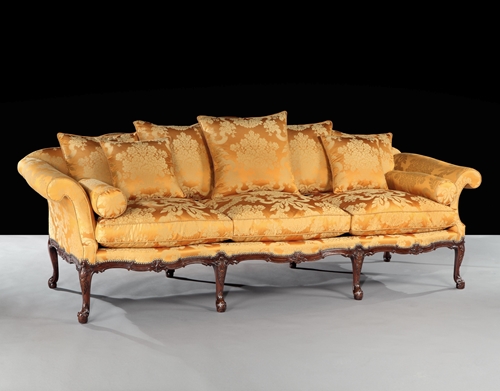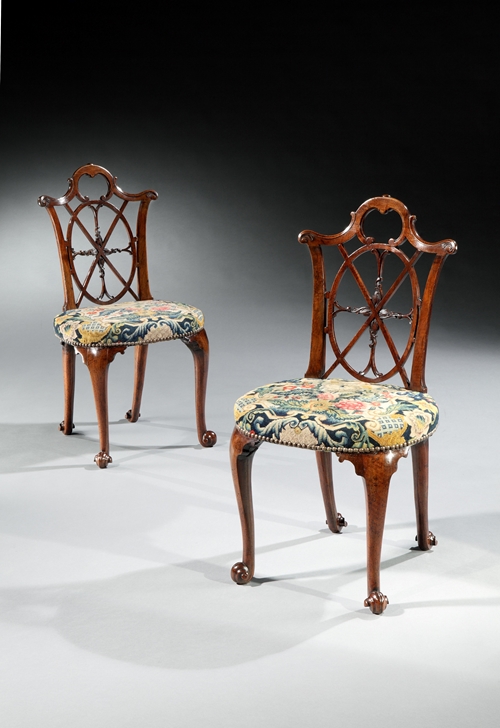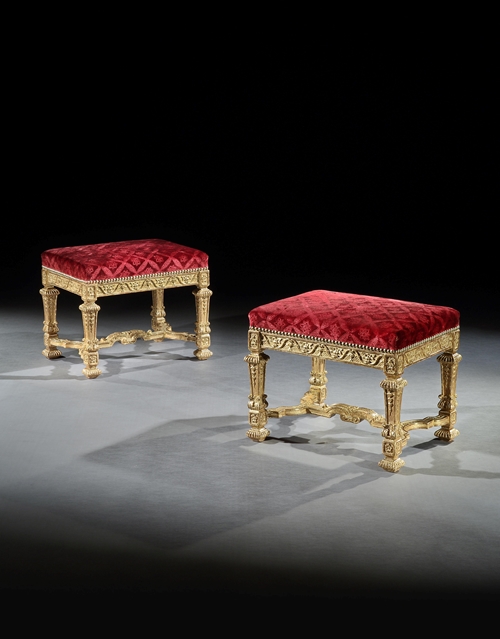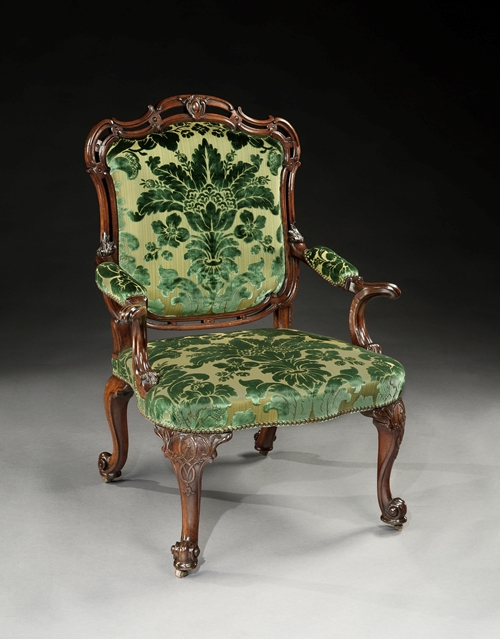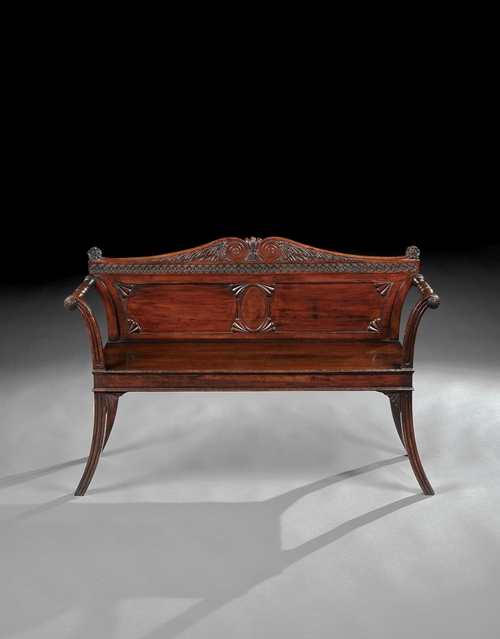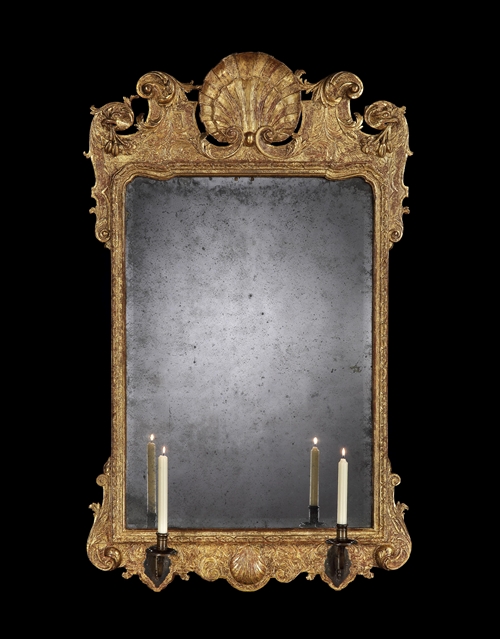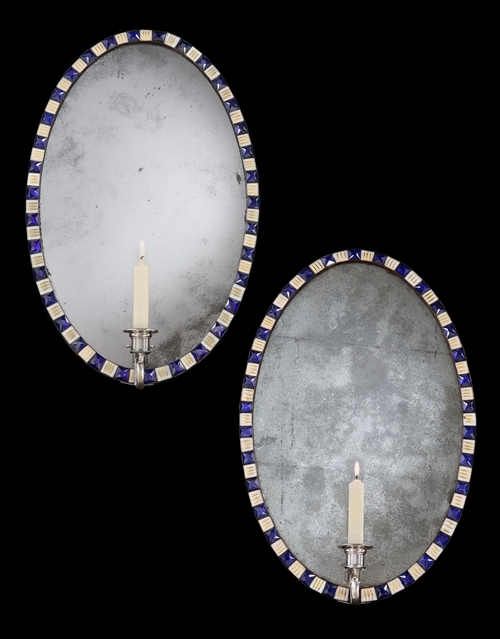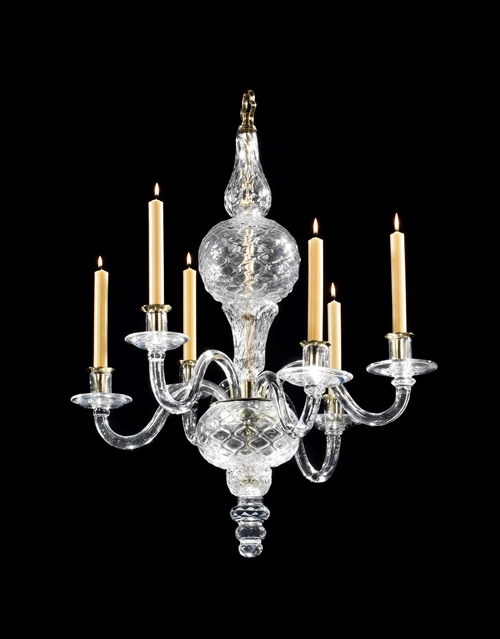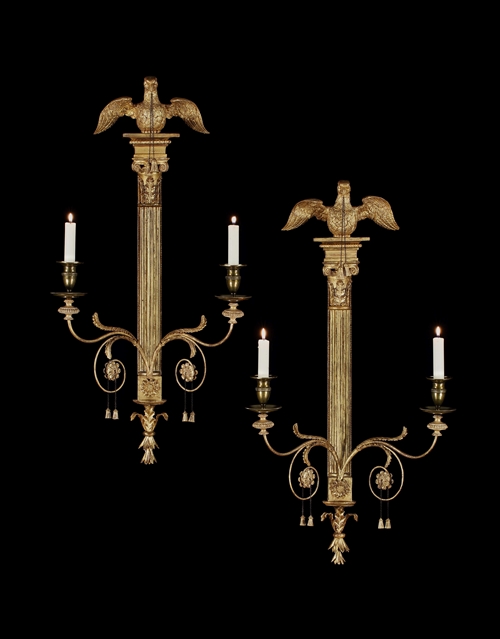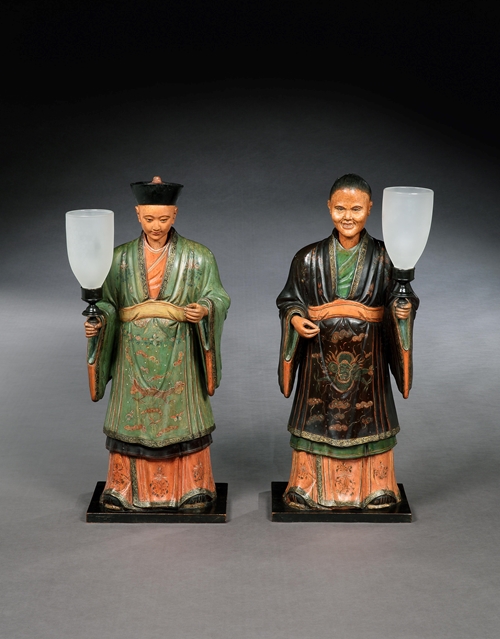An extremely rare and finely carved mid 18th century stained pine term after a design by John Vardy, the tapering body carved as a bust of Hercules supporting an Ionic capital with a later square statuary marble top, the detailed bearded bust draped in a lion's pelt above a fielded panel containing a suspended ribbon tied trophy of a crossed club and a bow with trailing oak leaves and acorns, with conforming imbricated panels to the sides and back, on four splayed scrolled and foliate carved feet on shallow blocks.
Benjamin Goodison was among the leading London furniture makers in the Kentian tradition of his day. He is recorded at the address of the Golden Spread Eagle, Long Acre, from 1727 to 1767. Among his illustrious patrons was Frederick, Prince of Wales, to whom he supplied a number of pieces for Hampton Court Palace. In the Prince's service he was involved in a number of occasions, culminating in making no less than eighty sconces for the funeral chamber of the Prince in 1751. Among other commissions were those for Viscount Folkestone at Longford Castle in Wiltshire, the Earl of Leicester at Holkham Hall in Norfolk, and the Earl of Cardigan at Deene Park in Northamptonshire. Another significant private patron was Sarah, Duchess of Marlborough, who employed Goodison at several houses including her London residence in Dover Street, and her heirs, the Spencers, at Althorp.
The ornamentation of Goodison's furniture is distinctive with boldness of scale and execution in fine detail. The female mask and carved fish scale decoration, as seen on these terms, were favoured devices. Like William Kent, Goodison's furniture reflects the classical ornamentation of the architecture. Although comparatively few specimens survive, a set of gilt female terms were supplied by Goodison in 1732-33 for the Prince of Wales and are still at Hampton Court Palace. They are described in Goodison's account as carved term fashion. Early 18th century architects introduced gilt terms into great Palladian houses. Their solid proportions were suited to support heavy objects and, in addition to candelabra, they were used for vases, perfume jars, lamps and busts.
Literature: Country Life, 'Longford Castle', December 26th, 1931, fig 10.
Looking for something similar? YOU MAY ALSO LIKE
YOU HAVE RECENTLY VIEWED ITEMS
- CAN WE HELP YOU?
- +44 (0)20 7493 2341
- [email protected]
